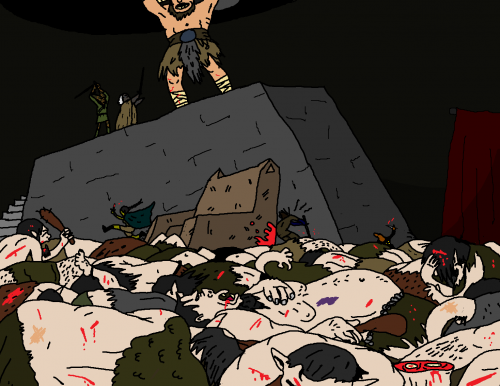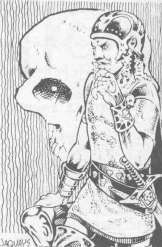 I have a theory that any book -any book at all – can be used as a D&D sourcebook.
I have a theory that any book -any book at all – can be used as a D&D sourcebook.
This is the second time I’ve illustrated a Blog of Holding post with a Babysitter’s Club cover. That’s because there are a lot of them around the house. Babysitter’s Club books are my wife’s slumming comfort book, just as 1970’s fantasy/horror novels are mine. “The Fire at Mary Anne’s House” kind of looks like it could be a genre crossover.
I’ve never read “The Fire at Mary Anne’s House”, but I don’t even have to open it to find inspiration for a supernatural horror D&D game. Look at Mary Ann! Her face and posture bespeak guilt, fear, or a deceptive faux-innocence. If she’s not a psychotic or possessed child, there’s a good chance she’s an evil spirit. In any case, I think we all know she burned down that house. From the title of the book, we can infer that she burned down her own house, unless she’s not really Mary Ann.
And how about that tag line? “Can Mary Ann rise from the ashes?” OK, so clearly Mary Ann was burned alive and is returning as some sort of vengeful ghost.
I think that what happened is, people whose bodies are burned but whose souls are unquiet (possibly because of some unfinished baby-sitting business) rise as spirits that the common people called “firebugs”. (Maybe the girl firebugs are called “fire Marys” or “fire Annes”.) Firebugs usually return at night, holding lanterns or candles. A firebug’s only desire is to burn their former homes, enemies or loved ones – everyone and everything they once had strong feelings about.
This is why, in a world where corpses can rise as zombies, cremation is not universal. Cremation can produce a firebug, juts as burial can produce a zombie.
An adventure idea: the PCs enter a village on Lantern Night, a festival where everyone carries a lantern or candle to protect themselves from the spirits who haunt this night. The first person the PCs meet is a solitary little girl with a candle, who speaks confused words about “saving the little ones” and runs towards an abandoned, half-burned house. If the PCs follow, they may be able to stop her from setting the building ablaze. If they don’t, they will have to deal with a fire sweeping through town.
From now on, I’ll try to record one d&d rule, adventure, or encounter idea from every book I read. This should be pretty easy, since about 1/2 of what I read is crappy pulp fantasy and sci-fi: the other half is, for the most part, 18th and 19th century novels and early 20th century adventure fiction, most of which has some swashbuckling. So for the most part it won’t be a stretch at all. If I somehow end up with a biography of Carol Burnett, or something, I’ll do my best.
I reserve the right to suppress any super-awesome ideas that I plan to use to surprise players. After all, if I don’t blog about a book, you poor bastards won’t even know I read it.









